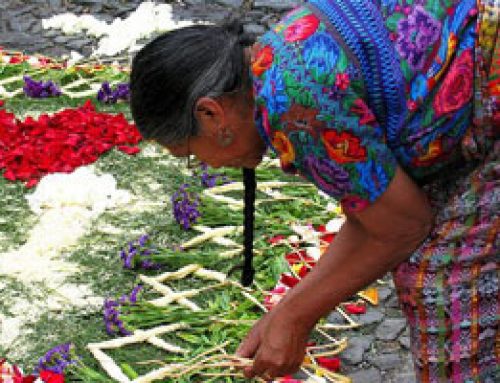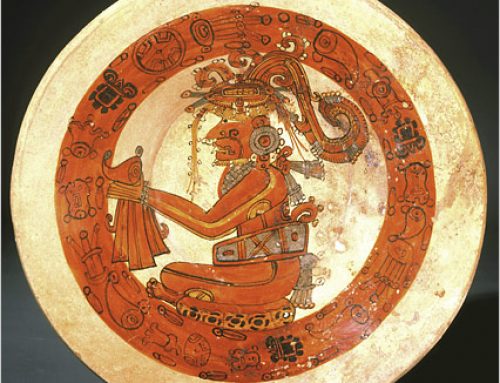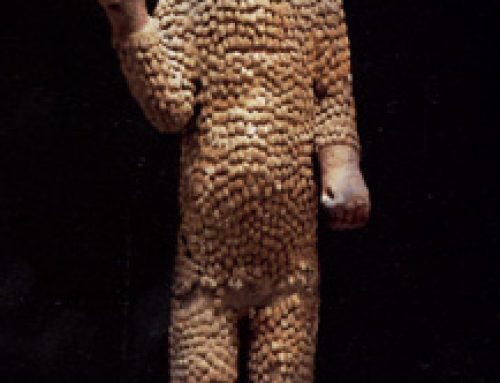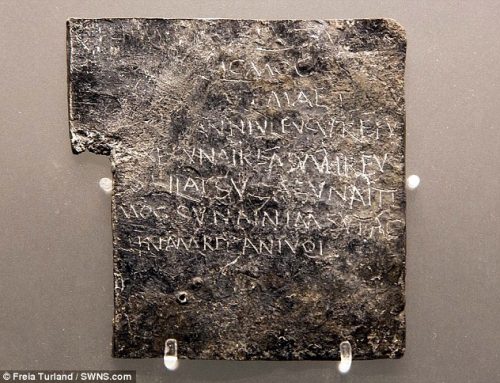
Building at Gobekli Tepe (ca. 9000 BC)
People have started a lot of different religions. Some of them are still practiced today; others are not. It is hard even to know what religion is. But let’s say religion is any tendency to change your own behavior in accordance with supernatural forces.
Most people believed that there were many invisible spirits that controlled how things happened. They thought that there were many gods, each responsible for different things. There was a god of the sky, a god of water, a god of love, and so forth. Egyptian, Sumerian, Chinese, Indian, African, Greek, Roman, and German religions all had their gods organized this way, even though they had different gods. We call this polytheism (poll-ee–THEE-is-em). Beginning at least with the beginning of farming, if not before, many people thought you had to keep these gods happy with animal sacrifices. (Sacrifice means killing animals for the gods.)
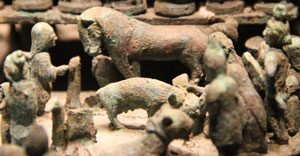
Han dynasty animal sacrifice (ca. 200 BC-200 AD)
But, beginning about 1350 BC in Africa, people got interested in monotheism. That’s just believing in one god. (Though often that god has a lot of weaker helper gods or angels or saints). Akhenaten, an Egyptian pharaoh, may have been one of the first powerful people to push this idea. (Or Akhenaten may have gotten the idea from somewhere else in Africa.) By 1100 BC or so (maybe), the Jews were practicing monotheism.

An Aztec sacrifice of a human being, about 1500 AD
Monotheism reached farther east, into Iraq and Iran and Afghanistan, with the religion of Zoroastrianism. But Zoroastrians added a strong notion of dualism (two-ism), with the world divided into good and evil.
Egypt (or somewhere else in Africa) was also the first place where people thought a lot about life after death. From Egypt, this interest in the afterlife spread through West Asia to India, where it took the form of reincarnation. The afterlife also reached Greece, as we see in the stories of Persephone and Achilles. But it never had much impact on Roman religion.

Buddha statue at Kamakura (Japan, 1252 AD, thanks to Dirk Beyer)
Not long afterwards, about 500 BC, as the first big empires got started with the Assyrians and then the Persians, the world’s religious leaders responded with a wave of new, big, sweeping religions. The earliest was Buddhism, in India. East Asia saw the rise of Taoism and Confucianism. Judaism developed more formal structure under Ezra and Nehemiah. In Greece, this phase brought us first Socrates and then Plato. Christianity spread west with the Roman Empire. (And now with Christianity, the Romans got their afterlife, and also monotheism.)
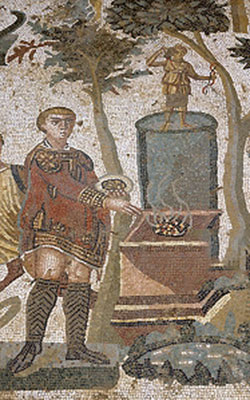
Emperor Maximian sacrifices incense to the goddess Diana (Piazza Armerina, Sicily, ca. 310 AD)
By 300 BC, in India, animal sacrifice started to seem old-fashioned and yucky. Most Hindus became vegetarians. They sacrificed little cakes, rather than animals. Christians, in the first century AD, replaced animal sacrifice with Communion, and the Jews stopped sacrificing after the Romans destroyed their temple. Romans themselves soon began to sacrifice mainly by throwing incense, rather than animals, into the fire. By the 500s AD, Buddhism correspondingly spread east all over China and Japan. And in the 600s AD, Islam got going, and it was even more monotheistic and even more abstract. Islam replaced Christianity and Zoroastrianism as the main religion in the Mediterranean, West Asia, and much of Africa. By the 1200s, Islam reached India and China, too.
Even as they were expanding across the world, Buddhism, Islam, and Christianity were also splitting up into smaller groups. Some Islamic people followed the Sunni division, while others became Shiites. Others became Sufis. Some Buddhists turned to Zen Buddhism, while others turned back to Hinduism. Some Christians became Orthodox, Manichaean, Nestorian, Franciscans, or Albigensians, and after 1500 some became Protestants. The Puritans, the Quakers, and the Mormons all grew out of Protestantism. Today there are hundreds of different religious groups in the world, each with their own beliefs. There are Muslims, Jews, Buddhists, Hindus, and Christians all over the world. Even in your own town, people probably follow hundreds of different religions!
